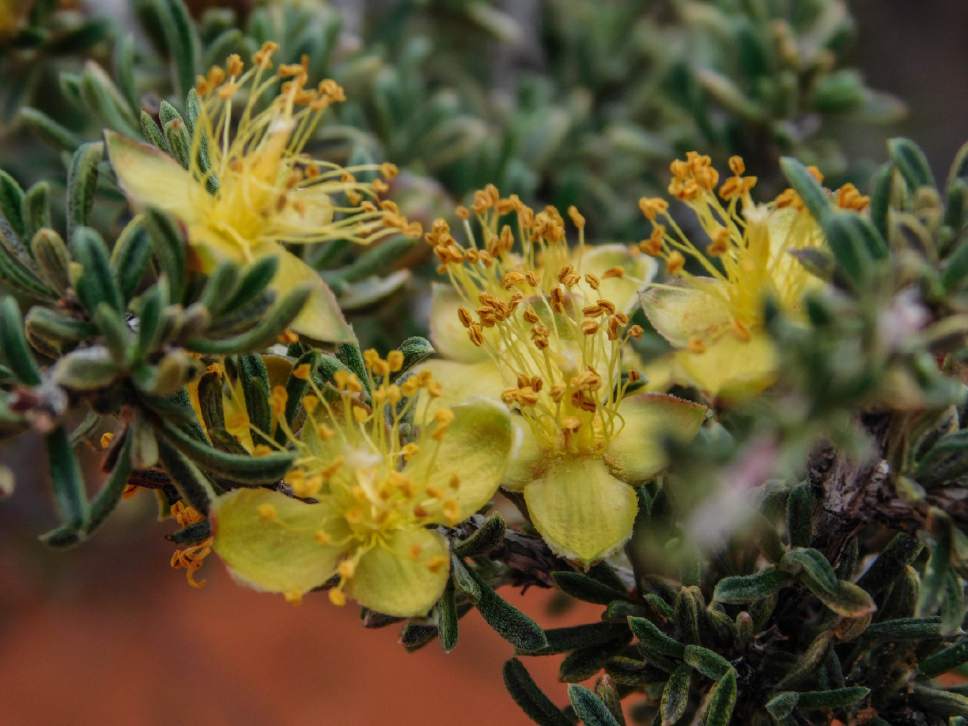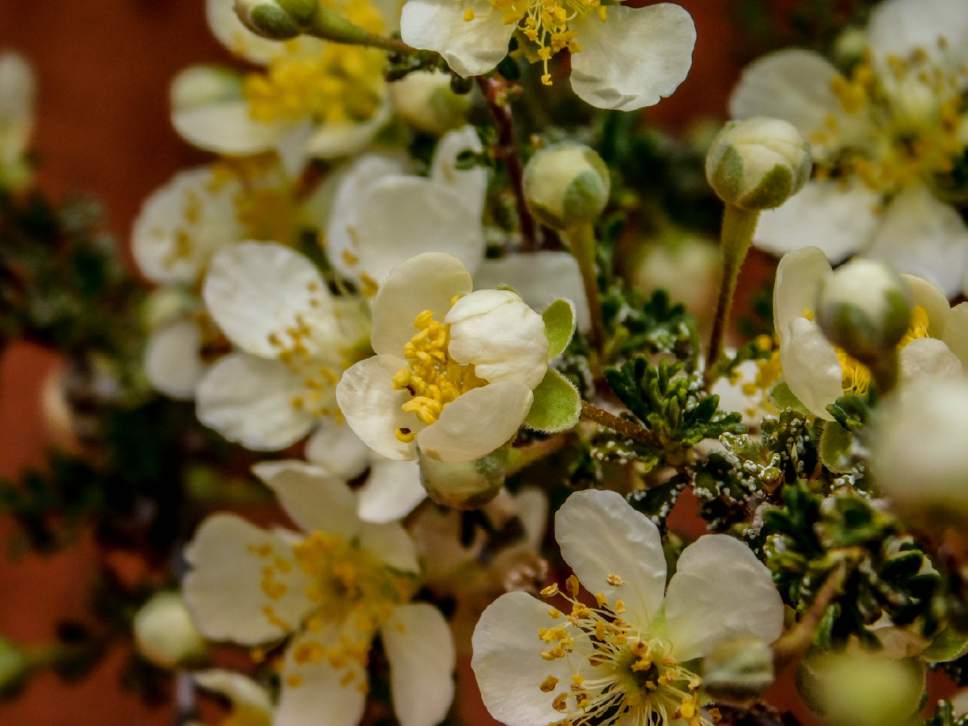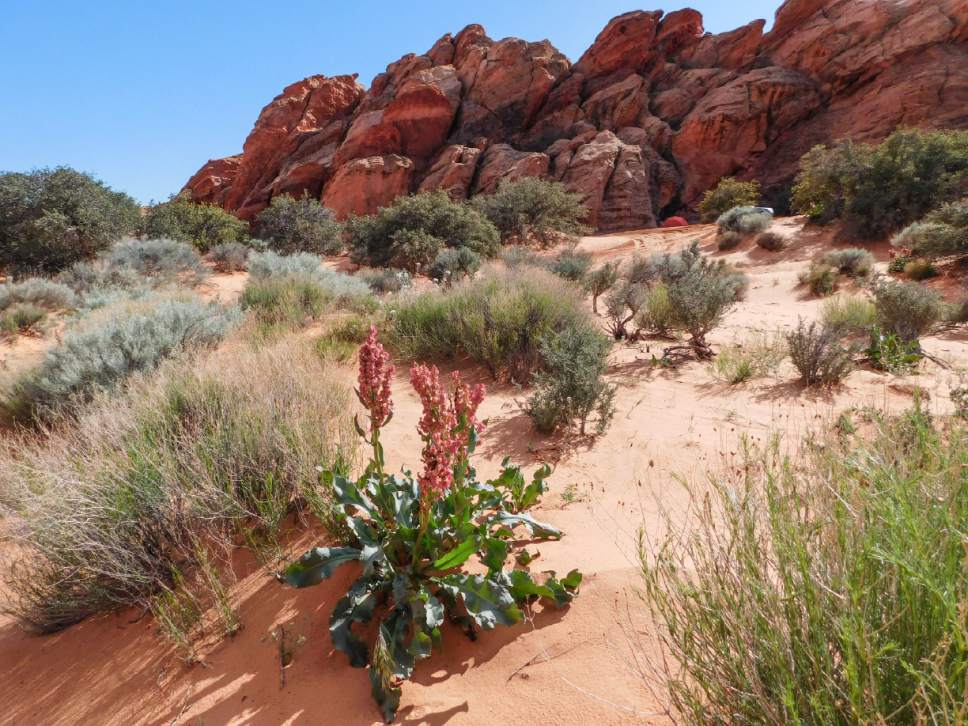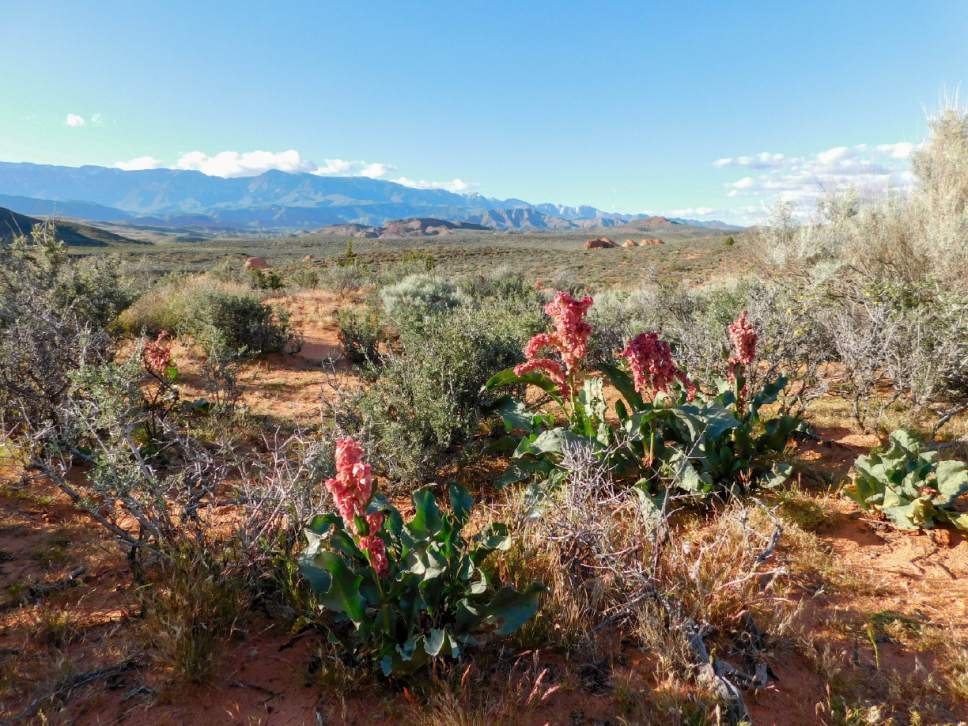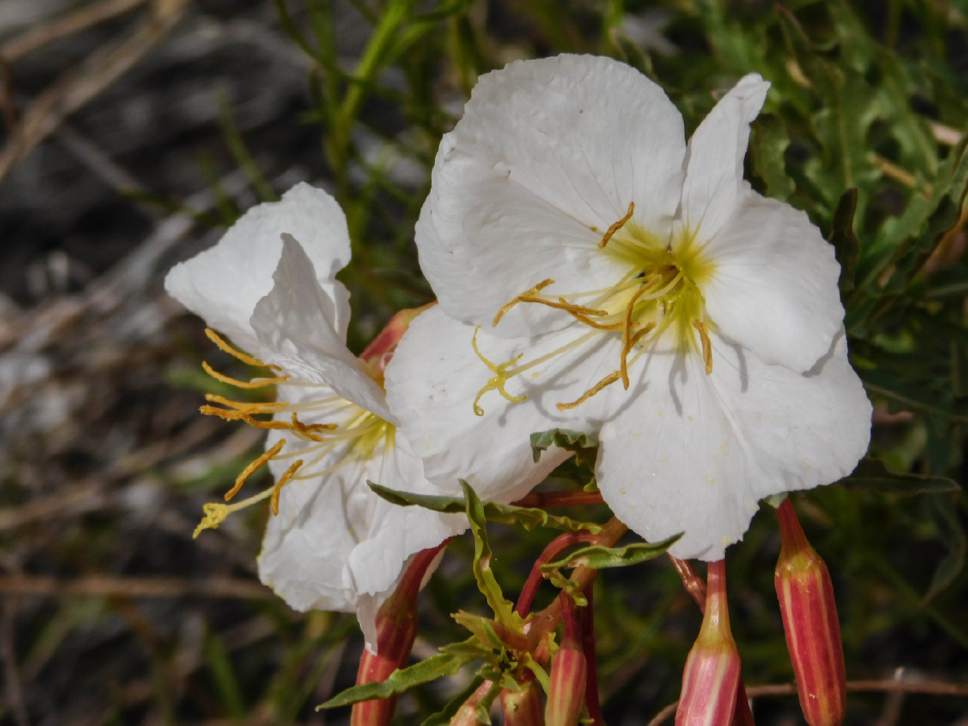This is an archived article that was published on sltrib.com in 2017, and information in the article may be outdated. It is provided only for personal research purposes and may not be reprinted.
Washington County • The scent of honey and spice greets me as I approach a Utah holly along the Mojave Desert Joshua Tree Road. Farther north, on the Red Cliffs Desert Reserve, desert alyssum bobs in the breeze near Babylon Arch. Bees hum around the iridescent purple of a desert sage near Sand Mountain south of Hurricane.
Like an old friend whose significance in my memory far exceeds our actual time together, spring flora are returning to the deserts.
Biologists around St. George say this year's wildflower display is a bit delayed by recent low temperatures; in early April I saw a lot of early blooms, but also a lot of buds. Viewing should be good for several weeks.
In addition to Utah holly, I found early paintbrush flowers glowing neon red on the Mojave Desert Joshua Tree Road. On the nearby Old Highway 91 southwest of Shivwits, I saw a number of globemallow flowers.
To see more, continue south just into Arizona, suggests retired BLM ecologist Lee Hughes, who gives wildflower tours in and around Washington County. In the low elevations near Beaver Dam, Ariz., large swaths of marigolds, globemallows and "a heck of a nice show" of poppies were visible as of the first week of April, Hughes said. Cacti of various types were on the verge of blooming, he said; toward the end of April, the endangered bearclaw poppy will unfurl in the White Dome area south of St. George.
West of St. George, in the Werner Valley and south of Sand Mountain, I found billows of desert alyssum and cheerful clusters of marigolds. On a short hike to a rock slab marked with dinosaur tracks, several desert sage plants were in full bloom, and Mormon tea shrubs were smothered in yellow blossoms.
North of St. George, in the Red Cliffs Desert Reserve, flower-peeping was like an Easter egg hunt. At the lush Red Reef Trail, penstemon, blue dicks and redbud shrubs were in bloom. Dryland flowers such as sweet sand verbena and coral panicles of dock appeared among flowering blackbrush and cliffrose along the lower, drier trail to Babylon Arch near Sand Cove.
Near Lake Powell, the best wildflowers were at the Hanging Garden Hike across from the Carl Hayden Visitor Center near Page, Ariz., said Amanda Hammond, deputy director of interpretation for Glen Canyon National Recreation Area. Hammond urged visitors to keep their eyes peeled for a desert orchid at the spring.
Elsewhere in the desert, blooms were expected a bit later. As of early April, some phlox, paintbrush and milkvetch were flowering at Capitol Reef National Park, with cacti and other plants blooming in mid- to late April, said park spokeswoman Lori Rome.
"We have the 19 different rock layers, and they're all on a tilt, like a deck of cards splayed out," Rome said. "What that means is, you've got 19 different soil types. Little variations in the material means different types of things grow in different layers."
With so many microhabitats, expect to find a lot of different individual plants rather than large carpets of flowers — except on Notom-Bullfrog Road, where masses of color may appear later this month, Rome said.
Farther north, intrepid explorers may find some special treats, said Steve Hegji, author of the book "Wasatch Wildflowers." In mid- to late April, purple musk mustard may appear en masse near Helper and Price and Tooele and Vernon, Hegji said. ATV riders at Five Mile Pass near Saratoga Springs should look for globemallow on west slopes. Yellow fixweed may bloom in May in the valleys along U.S. Highway 50 between Delta and Great Basin National Park, he said. The best chance to see sego lilies, Utah's state flower, probably will be in late May, along the west side of Utah Lake, Hegji said.
To the east, U.S. Highway 40 passes through a large range of elevations, offering a "good show for an extended period of time," Hegji said. In mid-May, color starts to fill the lower elevations of the Uintah Basin — "too many species to name," he said. From late-May to mid-June, large patches of bluish-purple Camas flower and white marsh marigold likely will be found between Daniels Pass and Strawberry Reservoir.
Rather than driving endlessly in search of acres flooded by a single color, Hegji recommends parking the car and exploring for treasures on foot.
"Stop just about anywhere and walk out into the scrub," he said. "You'll be surprised at the little beauties you'll find. That's a different experience — less awe, but more serendipity."
Twitter: @erinalberty


